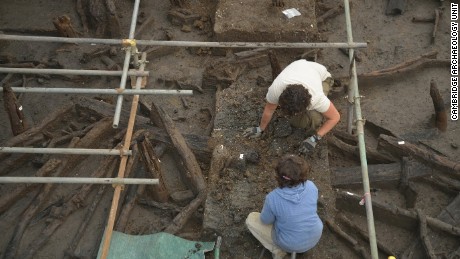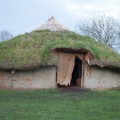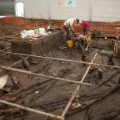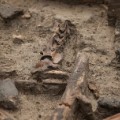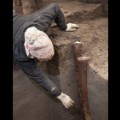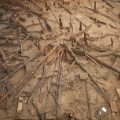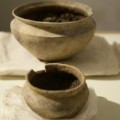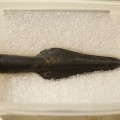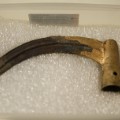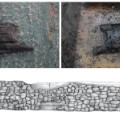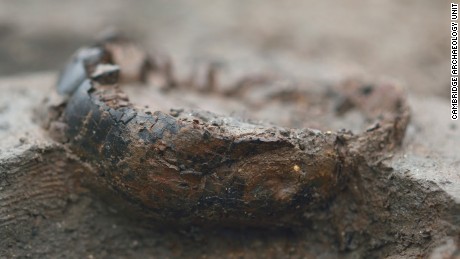Story highlights
- A perfectly preserved Bronze Age wheel has been found at the site
- It is thought to be the largest and earliest of its kind ever found in Britain
(CNN)A Bronze Age wheel, thought to be the largest and earliest of its kind, has been found at an ancient site in eastern England.
Unearthed at the site of a settlement dubbed "Britain's Pompeii," the 3,000-year-old find has been hailed by archaeologists as "unprecedented."
"The wheel is very well-preserved," Debbie Priddy, inspector of ancient monuments at Historic England, which is co-funding the $1.5 million project, told CNN. "Along with other finds, it expands our understanding of how the people of this settlement lived and exploited their environment."
The scorched wheel, which is a meter in diameter (about 3 feet), was found attached to its hub. Dig leaders at the Must Farm site, 140 kilometers (87 miles) north of London, say the artifact "poses a challenge to our understanding" of the Late Bronze Age technologies.
Thought to date around the end of the Bronze Age, from 1100 to 800 B.C., the settlement is believed to have been a home to several families. Archaeologists suggest it consisted of three, maybe four, large wooden roundhouses built on stilts above water. The newly discovered wheel was found close to the biggest house.
Exploring 'Britain's Pompeii'
"This settlement is built on water," Priddy said. "The fact that there are wheels around tells us that they were exploiting not just the river environment, but they had links to the dryland."
The wheel also provides a clue to another recent discovery of an articulated animal spine found nearby. First thought to be from a cow, archaeologists now believe the remains may be from a horse, which was used by inhabitants on the land.
Kasia Gdaniec, senior archaeologist at the Cambridgeshire County Council, the local authority, said: "This site continues to amaze and astonish us with insight into prehistoric life, the latest being the discovery of this wooden wheel."
Archaeologists believe the settlement was destroyed by a dramatic fire and collapsed into the river. But mud and water have preserved structures and artifacts in astonishing condition.
Ongoing excavations at the site have revealed well-preserved charred roof timbers, timber with tool marks, the remnant of a wooden fence and other items that would normally have decomposed by now, such as textiles made from plant fibers, bowls and jars with traces of food in them. Archaeologists even found some residents' footprints.
A historical time capsule
The wider area is known for its prehistoric finds, including a sword and rapier, unearthed in 1969, and the 2011 discovery of nine wooden boats. A nearby excavation revealed a smaller, incomplete Bronze Age wheel, estimated to date to 1300 B.C.
The findings suggest the site was a wealthy settlement.
"They probably ate a wide range of meat, cereal and fish, and used boats and wheeled vehicles," Priddy said.
The current dig at Must Farm quarry started in September, is likely to be extended. Once the excavation is complete, the findings will be displayed in local museums. But until then, archaeologists will continue searching the muddy treasure trove.
Priddy added: "I am sure there's much more to come."

